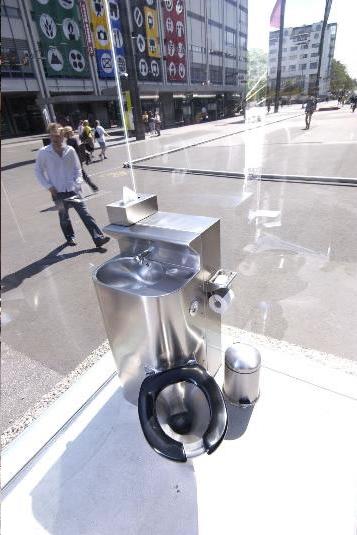Caught short? Don't be: your search for a public loo may be futile...
Public toilets are under threat, according to the BBC today. Public toilets are increasingly disappearing from high streets and other public spaces. Councils argue that toilets are costly to maintain in times of shrinking economic resource, requiring regular cleaning, maintenance and often policing or 'target hardening' (since public toilets are often used by drug users for example).
So what? Why should any of us, especially social scientists, care about the public toilet? The key issue that campaigners for public loos, such as the marvellously titled British Toilet Association, remind us of, is that access to toilets is an issue of social (and sociological) concern. Access to public spaces and services is unequally distributed in the population at large, with the usual suspects being excluded. In the case of toilets, some social groups have higher levels of need which places very real constraints on their ability to function as full members of society.
For example, older people may need more frequent access to toilet facilities: more than half of people with urinary incontinence are over 65 according to Help the Aged. Lack of access to public toilets is one of the things that keeps some older people cooped up in their homes. Women are also more in need of public toilets than men, for a number of reasons but mostly that women typically take longer to use the toilet. Why? Well, let's be frank: finding a free loo, unfastening, sitting down,
 wiping, refastening etc. all take longer than a quick unzip, whizz, shake, zip, don't they? And men are less likely to wash their hands than women... More seriously, women have additional requirements from their toilets: dealing with periods, not to mention the higher levels of incontinence suffered by large numbers of women who are pregnant, after childbirth or taking HRT. It all adds to the level of need. And since, in the majority, it is women who are out and about with babies and small children, there are additional, dare I say, urgencies.
wiping, refastening etc. all take longer than a quick unzip, whizz, shake, zip, don't they? And men are less likely to wash their hands than women... More seriously, women have additional requirements from their toilets: dealing with periods, not to mention the higher levels of incontinence suffered by large numbers of women who are pregnant, after childbirth or taking HRT. It all adds to the level of need. And since, in the majority, it is women who are out and about with babies and small children, there are additional, dare I say, urgencies.Existing public toilets are often inadequate for the task: are there many women who haven't experienced queueing for hours because there just aren't enough cubicles while men breeze in and out? Many of us have given up and just used the Men's on numerous occasions. Facilities for people with mobility issues are even thinner on the ground, despite the recent Disability Discrimination Acts. Many authorities are unable to keep on top of cleaning requirements, let alone provide adequate handwashing facilities or baby changing areas. For many members of those groups who need the most good-quality access to public toilets, it is often hard enough already to get out and about to play a full role in society: older people, people with mobility impairments, women with small children in pushchairs spend far too much time as it is negotiating physical obstacles or staying home because it is just easier.
Those public toilets that do exist ought to be maintained with pride by local authorities, since they are a key feature of a healthy society, often developed in the real crucible of civic responsibility and concern over public health in the Victorian era. (To find out more about the history of the toilet, a good place to start is the wittily-named Flushed with Pride exhibition at the Gladstone Pottery museum, just up the road from Keele University.) Providing for a civilised society's basic needs for both biological relief and privacy has to be a key goal, surely?
No comments:
Post a Comment